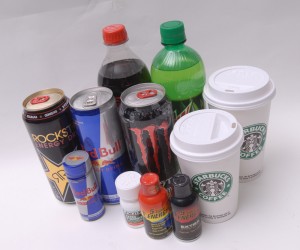Active Compound: Caffeine / trimethylxanthine
Found in: Coffee, tea, chocolate, soft drinks, energy drinks, over-the-counter pain relievers, over-the-counter stimulants, prescription medication
Mode of Consumption: Ingestion
DEA Scheduling/Legal Status (in US): Unscheduled
Effects:
Increased alertness, mild euphoria, increased heart rate, irregular heartbeat, increased blood pressure, increased breathing rate, acts as diuretic
Risks:
Physiological dependence, panic attacks, nervousness, irritability, anxiety, tremulousness, muscle twitching (hyperreflexia), insomnia, headaches, respiratory alkalosis, heart palpitations
Dangerous Drug Combinations:
Should be avoided if taking other stimulants, cold medicines containing phenylpropanolamine/norephedrine, or antidepressants that are MAO inhibitors (eg. Marplan, Nardil, Parnate).
Special Considerations:
Can be used as a performance-enhancing drug.
And remember, if somebody may need help, play it safe and call for medical assistance.
“Students may bring an intoxicated or drug-impaired friend to University Health Services or to a hospital, or seek assistance from College residential life staff or HUPD, and by doing this, neither they nor the friend will face disciplinary action from the College for having used or provided alcohol or drugs.”
The Amnesty Policy
Harvard College Student Handbook
Sources:
Buzzed: The Straight Facts About the Most Used and Abused Drugs from Alcohol to Ecstasy (Third Edition), by Cynthia Kuhn, Scott Swartzwelder, and Wilkie Wilson. Published 2008 by W. W. Norton & Company.
National Institute on Drug Abuse (NIDA), part of the National Institute of Health (NIH) of the U.S. Department of Health and Human Services.
http://www.nida.nih.gov/DrugPages/
U.S. Drug Enforcement Agency (DEA), part of the U.S. Department of Justice.
Erowid Organization


